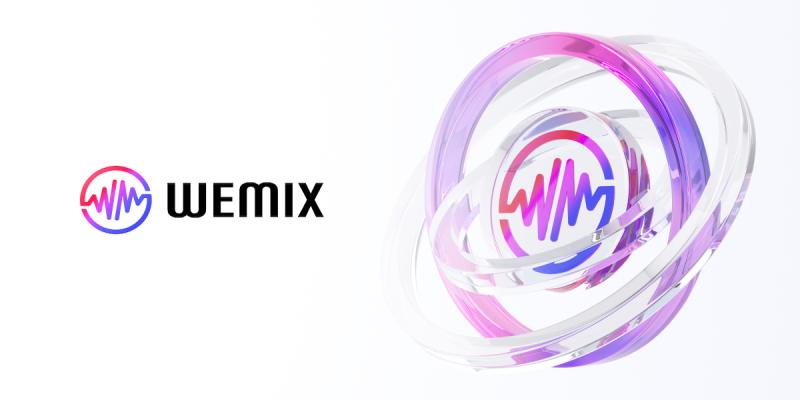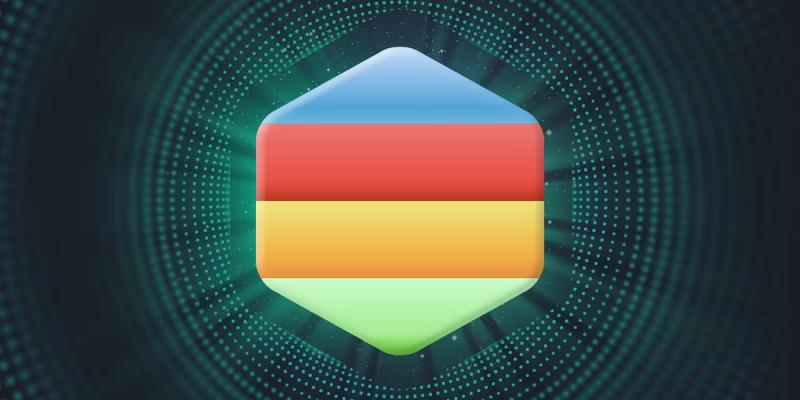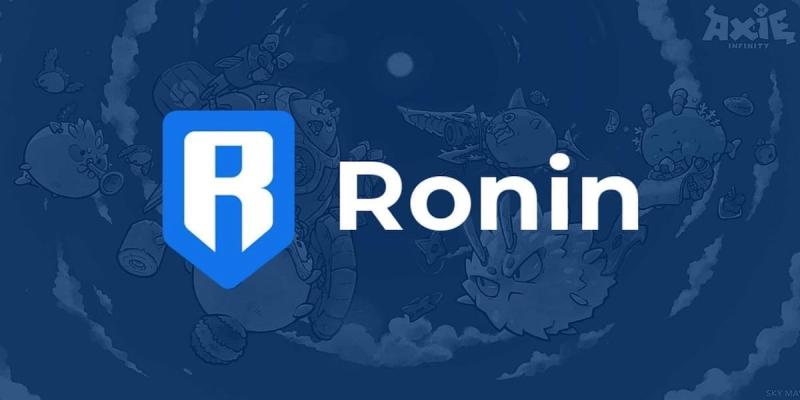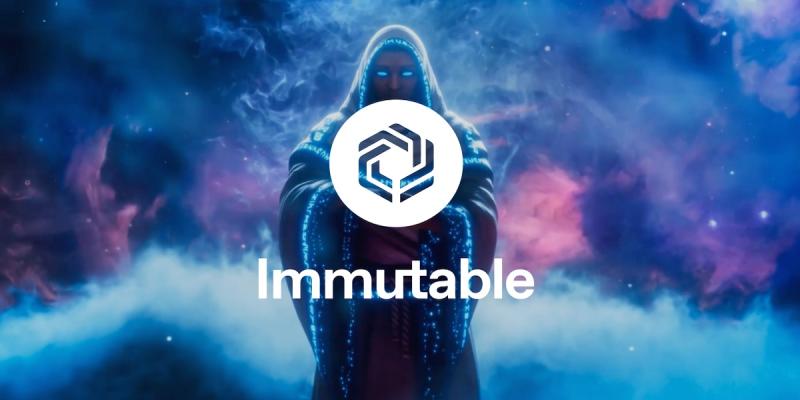Blockchain technology has become a fundamental part of digital gaming infrastructure, enabling player-owned economies, transparent asset trading, and new monetization models. As of 2025, it has grown into a mature industry with its own infrastructure and real economic value. Immutable, WEMIX, Beam, and Ronin are now the most popular and widely used blockchains for gaming, according to market data and analytics.
Each network offers a distinct value proposition—whether scalability, interoperability, privacy, or mass-market adoption. These blockchains collectively illustrate the diversity of design philosophies shaping the Web3 gaming landscape.
Key Takeaways
-
Immutable, WEMIX, Beam, and Ronin form the technological backbone of Web3 gaming in 2025.
-
The global blockchain gaming market is expected to grow from USD 13 billion in 2024 to USD 301.5 billion by 2030, a CAGR of 69.4%.
-
Developers emphasize “play-and-own” over “play-to-earn,” prioritizing sustainable economies.
-
NFT standards and cross-chain protocols enable interoperable digital assets.
-
Layer-2 solutions and green consensus models improve environmental efficiency.
What Is Blockchain Gaming and How Does It Work?
Concept and Function
Blockchain gaming uses decentralized ledgers to record in-game transactions, ensuring transparency and permanent ownership of virtual assets. Unlike traditional games—where items and currencies are stored in centralized databases—blockchain games use smart contracts to define the rules of ownership, allowing assets to exist independently of a single publisher or platform.
These assets are typically represented as non-fungible tokens (NFTs) or fungible game tokens, allowing players to buy, sell, and trade them freely through on-chain marketplaces. This decentralization aligns with broader Web3 values of player autonomy and interoperability.
Historical Context
-
2017–2019: The first wave of blockchain games, such as CryptoKitties and MyCryptoHeroes, introduced NFTs to consumer audiences but struggled with scalability and useri experience.
-
2020–2022: Axie Infinity pioneered the “play-to-earn” model, creating the first major blockchain game economy and popularizing Ronin as a dedicated gaming chain.
-
2023–2025: The sector shifted toward utility-based economies, focusing on gameplay, player retention, and sustainable tokenomics rather than speculative income.
This historical progression highlights the maturation of blockchain gaming from early experimentation to structured, sustainable ecosystems.
How Big Is the Global Blockchain Gaming Market in 2025?
Market Valuation and Growth Projections
The blockchain gaming industry has grown exponentially. As per Grand View Research (2025), it’s projected to exceed USD 301.5 billion by 2030, growing at 69.4% CAGR.
This trajectory outpaces nearly all other digital entertainment sectors, including esports and VR.
The key drivers include:
-
Rising popularity of NFTs as digital property.
-
Integration of DeFi mechanisms (staking, liquidity pools) into games.
-
Increased investor confidence in blockchain infrastructure.
-
Regulatory normalization of digital asset markets.
Regional Market Distribution
Asia-Pacific dominates blockchain gaming due to high mobile adoption rates and established Web3 ecosystems such as WEMIX and Ronin. South Korea, Japan, and the Philippines have produced the highest engagement levels.
North America leads in development of Layer-2 scaling and cross-chain solutions, notably through Immutable zkEVM and Polygon Studios partnerships.
Europe, emphasizes sustainability and privacy frameworks, aligning with Beam’s privacy-focused model and GDPR-compatible protocols.
Investment and Institutional Involvement
Venture capital and traditional gaming giants have entered the sector. Firms like Animoca Brands, a16z Crypto, and Binance Labs have collectively funded over 400 blockchain gaming projects since 2021.
Traditional gaming publishers are exploring tokenized game content, community-driven development, and blockchain-based asset verification systems to increase transparency and engagement.
What Are the Top Blockchain Gaming Trends in 2025?
Play-and-Own: The Sustainable Evolution
After the collapse of early play-to-earn economies due to token inflation, play-and-own emerged as a sustainable alternative. Players now acquire assets with intrinsic utility—such as in-game upgrades, crafting materials, or governance rights—rather than speculative income tokens.
This shift has improved retention and reduced economic volatility, aligning incentives between developers and players.
Mainstream Studio Adoption
Blockchain integration is now part of major development pipelines. Ubisoft, Square Enix, and Nexon are all adding blockchain features to their games, showing that this new tech is finally catching on in the gaming world.
Green Infrastructure and Energy Efficiency
Switching from energy-hungry systems to more eco-friendly ones has made a huge difference. Blockchains like Immutable, Polygon, and Ronin are now much greener, helping solve the environmental worries that used to slow things down.
Interoperability and Cross-Chain Gaming
Interoperability is central to the next phase of blockchain gaming. Players can now transfer assets between networks using bridges and cross-chain protocols like LayerZero, Axelar, and Chainlink CCIP.
This interoperability supports metaverse integration, enabling games to share NFTs, reputation systems, and currencies across ecosystems.
Which Are the Leading Gaming Blockchains of 2025?
Immutable (IMX)
-800.jpg)
Immutable is a Layer-2 scaling solution on Ethereum optimized for NFTs and gaming. It uses zk-rollups (zero-knowledge proofs) to batch transactions off-chain, ensuring speed and cost-efficiency while maintaining Ethereum-level security.
Technological Highlights:
-
zkEVM: Enables EVM compatibility with zero-knowledge proof efficiency.
-
Gas-free NFT minting: Costs are abstracted away for users, reducing friction.
-
Immutable Passport: A unified wallet and identity layer simplifying onboarding.
-
Carbon neutrality: Supported by climate offset partnerships.
Notable Projects:
-
Illuvium – A high-fidelity RPG with blockchain asset ownership.
-
Gods Unchained – A competitive trading card game showcasing Immutable’s NFT handling.
-
Guild of Guardians – Mobile RPG with mainstream adoption ambitions.
Impact and Challenges:
Immutable is the most scalable and environmentally friendly Ethereum Layer-2 for gaming. Still, because it depends on Ethereum, it can be less flexible than independent Layer-1 chains.
WEMIX

WEMIX, developed by Wemade, is a comprehensive blockchain ecosystem tailored for game publishing. Its WEMIX3.0 mainnet operates on a hybrid Proof-of-Authority mechanism, providing stable throughput and minimal transaction latency.
Core Components:
-
WEMIX PLAY: Gaming platform and marketplace hosting multiple Web3 titles.
-
WEMIX.Fi: DeFi infrastructure for staking and liquidity management.
-
NILE (NFT Is Life Evolution): Governance and NFT ecosystem enabling DAOs.
-
Kurrency System: Combines on-chain and in-game tokens for balanced economics.
Prominent Games:
-
MIR4 Global – One of the first large-scale MMORPGs with integrated blockchain.
-
Anipang Match – Mobile title bridging casual players with blockchain assets.
-
Night Crows – AAA-quality MMO with strong on-chain economies.
Strategic Advantages:
WEMIX’s success in Asia, coupled with its integration of DeFi and governance tools, has made it a holistic gaming platform. It bridges Web2 and Web3 audiences more effectively than any other chain in 2025.
Beam

Beam differentiates itself with a privacy-first architecture built on the Mimblewimble protocol. It enables confidential transactions and encrypted smart contracts, which protect sensitive user and game economy data.
Technical Features:
-
Confidential asset ownership—data visible only to transacting parties.
-
Enhanced scalability through compact block structures.
-
Decentralized exchange (DEX) integration with privacy guarantees.
-
Compatibility with mobile and lightweight clients.
Adoption Use Cases:
Beam’s privacy tools are a good fit for strategy games, role-playing worlds, and metaverse economies that need private transactions. Developers in Europe and East Asia, where privacy rules are strict, find it especially appealing.
Limitations:
Although Beam’s privacy features are strong, its smaller ecosystem and developer community mean it does not reach as many users as open Layer-2 platforms like Immutable.
Ronin

Ronin, built by Sky Mavis, is a sidechain optimized for Web3 gaming. Initially designed for Axie Infinity, it now supports multiple games, developers, and digital asset marketplaces.
Technical Overview:
-
Consensus: Proof-of-Authority (PoA) with hand-picked validators for stability.
-
Transaction Throughput: Up to 3-second block times with >1,000 TPS capacity.
-
Ethereum Bridge: Enables asset and liquidity transfers with minimal gas fees.
-
Ronin Wallet and Mavis Hub: Simplify onboarding and player account management.
Ecosystem Expansion:
Ronin has evolved from a single-game chain into a broader platform supporting titles like Pixels, Wild Forest, and The Machines Arena.
Its governance and validator system continue to decentralize gradually, enhancing security and trust.
Industry Significance:
Ronin’s story shows that blockchain gaming can be sustainable when its economic design is improved over time. After 2022, Axie Infinity’s comeback made Ronin a good example of a resilient ecosystem.
Other Notable Platforms
-
Polygon (MATIC): Partnered with The Sandbox and Zed Run, known for EVM compatibility and eco-efficiency.
-
Solana: Offers high-speed, low-cost transactions ideal for esports and mobile titles.
-
BNB Chain: Focused on GameFi and community-led projects.
-
Aptos and Sui: Next-generation Layer-1s using the Move language for security and speed.
These platforms complement the leaders, expanding the diversity of technical experimentation in gaming blockchain design.
How Do the Top Gaming Blockchains Compare Technically?
|
Immutable |
Layer-2 zk-rollup |
zk-Proof |
9,000 |
Illuvium, Gods Unchained |
Gas-free, eco-friendly |
Dependent on Ethereum base layer |
|
WEMIX |
Hybrid Layer-1 |
PoA |
4,000 |
MIR4 Global, Night Crows |
Mature ecosystem, integrated DeFi |
Jurisdictional risks |
|
Beam |
Layer-1 Privacy |
Mimblewimble |
1,000 |
Indie titles |
Privacy compliance |
Limited network effect |
|
Ronin |
Sidechain |
PoA |
1,500 |
Axie Infinity, Pixels |
Low cost, proven scale |
Limited validator count |
|
Polygon |
Layer-2 PoS |
PoS |
7,000 |
The Sandbox |
Large developer base |
Network congestion |
Core Technologies Underpinning Blockchain Gaming
Scalability and Latency
Modern gaming requires near-instant confirmation times. Solutions like zk-rollups, Optimistic Rollups, and sidechains balance throughput with decentralization.
Emerging infrastructure layers like Immutable zkEVM and Arbitrum Nova specifically target gaming use cases, achieving latency below 1 second.
Tokenomics Architecture
Balanced token models mix utility, governance, and rewards to keep economies stable. Many systems now keep in-game tokens and governance assets separate to avoid inflation, as shown by Axie Infinity’s changes after 2023.
Smart Contract Innovation
Smart contracts now govern item creation, loot distribution, and royalties. For example, Immutable’s royalty standard ensures automatic revenue distribution to creators, establishing transparent secondary markets.
DeFi-Gaming Convergence
GameFi brings DeFi and gaming together, letting players stake NFTs, rent digital assets, and provide liquidity for game tokens. This financial layer turns entertainment platforms into active economic systems.
What Challenges Does Blockchain Gaming Still Face?
-
Regulatory Uncertainty:
Governments continue to debate the classification of tokens as securities or digital goods. Inconsistent regulation remains a major adoption barrier. -
User Experience Complexity:
Wallet creation and gas fee management still hinder mainstream onboarding, though “invisible wallets” like Immutable Passport are closing the gap. -
Economic Volatility:
Token price instability can undermine in-game economies, requiring careful balancing and supply management. -
Security Concerns:
Bridge exploits and smart contract bugs have led to multi-million-dollar losses; rigorous auditing is now standard practice. -
Cultural Resistance:
Some traditional gamers are still unsure about games with monetized systems. Clear information and openness are important to help close this gap.
What Is the Future Outlook for Blockchain Gaming?
Convergence with Artificial Intelligence
AI integration is redefining asset generation, narrative design, and dynamic game balancing. Coupled with blockchain verification, AI can produce autonomous economies where assets evolve based on player and algorithmic behavior.
Interoperability and Metaverse Infrastructure
Cross-chain standards will define future success. Chainlink CCIP and LayerZero are building frameworks for universal gaming assets, where NFTs persist across worlds and engines.
Environmental Commitments
Carbon-neutrality is now an industry expectation. Projects like Immutable and Polygon publish annual environmental audits, embedding sustainability as a competitive advantage.
Industry Consolidation
The market will likely consolidate around major ecosystems. Immutable and WEMIX lead for enterprise-scale adoption, while Ronin and Polygon serve specialized markets. Smaller chains will pivot toward niche audiences or integrate as subnetworks.
Global Adoption Outlook
By 2030, most major games are expected to use blockchain technology in the background, much like how online multiplayer or cloud saves work today.
Conclusion
Blockchain gaming has transitioned from speculative experimentation into an established digital economy. The four dominant platforms, Immutable, WEMIX, Beam, and Ronin, represent diverse yet complementary visions of what decentralized gaming can achieve.
The industry is moving toward sustainability, interoperability, and AI integration, which means blockchain will soon become an essential but hidden part of gaming. By 2030, it will affect more than just entertainment, changing digital ownership, creative economies, and how players connect with games.
Frequently Asked Questions
Here are some frequently asked questions about this topic:
Which are the top blockchains for gaming in 2025?
Immutable, WEMIX, Beam, and Ronin are the leading gaming blockchains in 2025, each dominating in different categories such as scalability, ecosystem integration, privacy, and proven adoption.
Why are Layer-2 solutions important?
Layer-2 networks like Immutable and Polygon reduce costs and increase speed while maintaining Ethereum’s security, making them essential for games requiring microtransactions.
Can traditional games adopt blockchain features?
Yes. SDKs, APIs, and middleware allow studios to integrate NFTs, marketplaces, and token systems without overhauling game engines.
Are blockchain games safe and sustainable?
Modern networks employ audited smart contracts and Proof-of-Stake consensus, reducing both environmental and security risks.
What’s the growth potential of blockchain gaming?
Analysts project continuous double-digit annual growth, with mainstream adoption driven by improved UX, scalability, and developer support.

